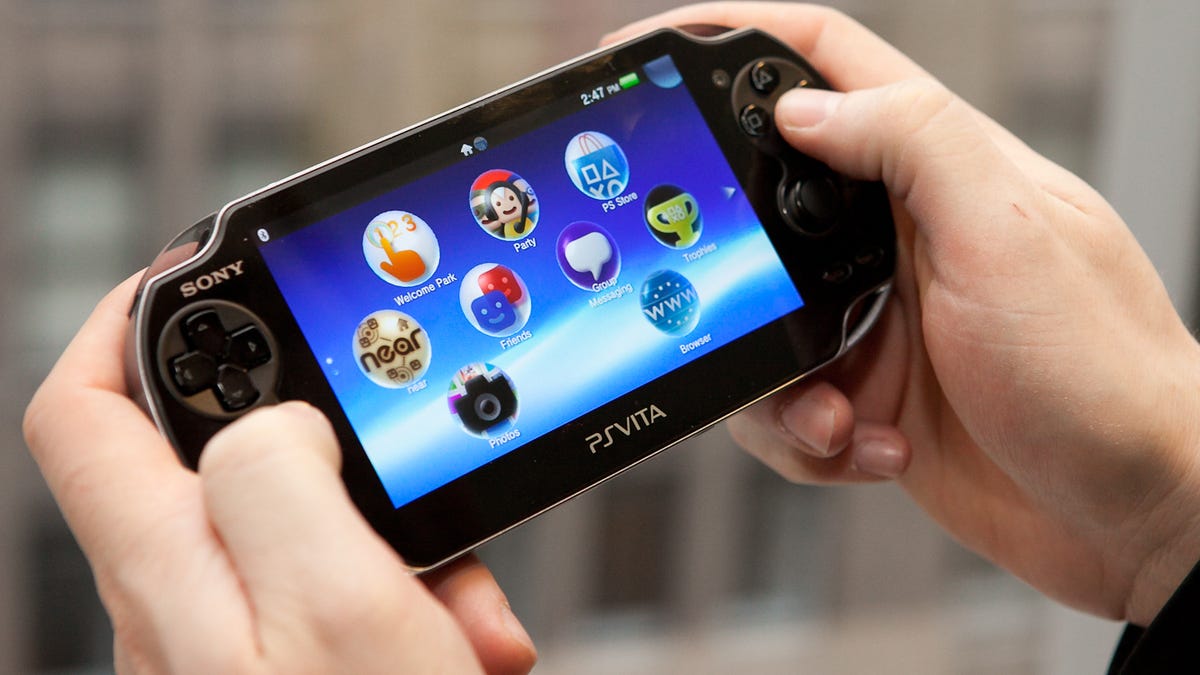PlayStation Vita and the complexity conundrum
Sony's new PlayStation Vita has 13 buttons, two touch panels (one on the screen, the other on the back), and a pair of analog control sticks.

If the far-reaching trend is toward stripped-down interfaces, why does Sony's new PlayStation Vita have so many buttons?
The most obvious counter-examples are Apple's iPhone and iPad, each with a singular physical button augmented by contextual onscreen touch controls. But we've also seen this concept of "design by subtraction" elsewhere. Traditional touch pads on laptops, pairing a tactile surface with discrete left and right mouse buttons, are being replaced with clickpads, which incorporate those left and right mouse button functions right into a one-piece pad. Newer phones, such as the Samsung Galaxy Note, are nearly all screen, clearly designed for gesture control above all else.
By way of contrast, Sony's new PlayStation Vita handheld game console has 13 buttons, two touch panels (one on the screen, the other on the back), and a pair of analog control sticks, not counting the volume buttons. Additionally, there are separate panels that open up to accommodate game cards and memory cards (plus a SIM card slot on the 3G version).
Of course, its level of complexity isn't necessarily a bad thing, and without its wealth of physical inputs, the Vita couldn't do the thing it does best: mimic the living room console experience in a way that previous handhelds, or your iOS/Android device, simply can't touch.
Back in the spring of 2011, during the annual E3 video game industry trade show, I took a more skeptical view. At the time, I was very concerned about what I called the "dangers of complexity," saying:
Both the Wii U and Vita...are going against the conventional wisdom of recent tech hardware, adding layers of complexity to devices that arguably should be made as simple as possible. ...The Sony PlayStation Vita feels cluttered, with dual control sticks, a touch screen, a separate touch pad on the back, and games that can use different combinations of stick controls, touch-screen input, or a gyroscope. The hardware and some of the software looks impressive, to be sure, but there's clearly going to be a learning curve there, even for longtime PSP players.
Now that we've had the Vita hardware in house for several days, that learning curve has proven to be less than feared in most cases, but not entirely a non-issue. Initially setting the system up to be (permanently) tied to a PSN account took a little trial and error, and some parts of the interface can be confusing--every time you insert a game cartridge (a proprietary flash memory card), the game's icon gets installed on the "desktop," where it stays even when the cartridge is removed, although the ever-present icon is useless without the game card inserted. Elegant, it's not, but by holding down a finger on an icon, you can enter an iOS-like edit mode, where you can move or delete icons.
Without even having to deal with app versions of Twitter and Facebook yet, the home screen is filled with social and sharing icons; the programs, called Party, Near, Friends, and Group Messaging, all seem like they could be parts of the same master social ecosystem, not disparate apps, each with its own interface and rules. The Content Manager app is likewise cumbersome (perhaps to assuage piracy fears), but to be fair, video management on an iOS device through iTunes is no walk in the park, either.
The Vita games themselves use all the hardware's different input methods in a variety of ways. The stunning-looking Uncharted: Golden Abyss is clearly the flagship game, and takes care to include a sampling of each of the control options, including the analog sticks, buttons, triggers, touch screen, rear touch panel, Select and Start buttons, and even the gyroscope.
It could easily become a challenge to remember all the ways to interact with the game, but fortunately most of those tacked-on extras can be skipped, and nearly everything in the game can be controlled with just the analog sticks and buttons--much like the PlayStation 3 Uncharted games. And if you haven't seen the game in action yet, there is some great-looking onscreen footage of Uncharted in the podcast video clip embedded below. It's exactly what an new hardware platform needs to make a splash: a must-have killer app.
By way of comparison to those 13 buttons (plus touch and motion controls) on the PlayStation Vita, an Xbox 360 controller has 15 buttons (counting the D-pad as four) plus two analog sticks. A standard PS3 controller also has 15 buttons, in a nearly identical layout, plus analog sticks and a motion sensor. It's clear the Vita has steered closer to that living room standard than other portable game hardware.
It's a wager, but it may be one worth making. Like the iPad originally was, the Vita is a device that comes off better in person than on paper. The combination of the twin analog control sticks and the simply brilliant OLED display alone move the device into serious contention for any gamer, even as the fear of complexity may scare off the casual audience.
For more on the Vita, check out our full review here, and below, watch us test and debate the Vita on the CNET Labscast.

